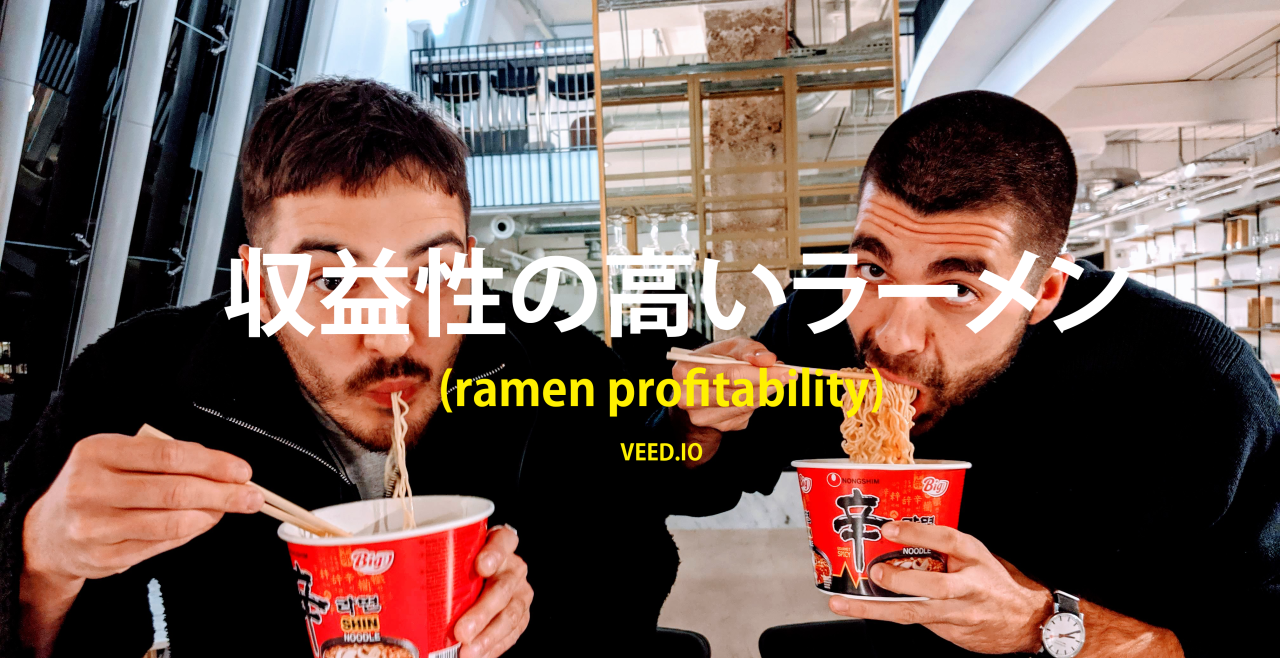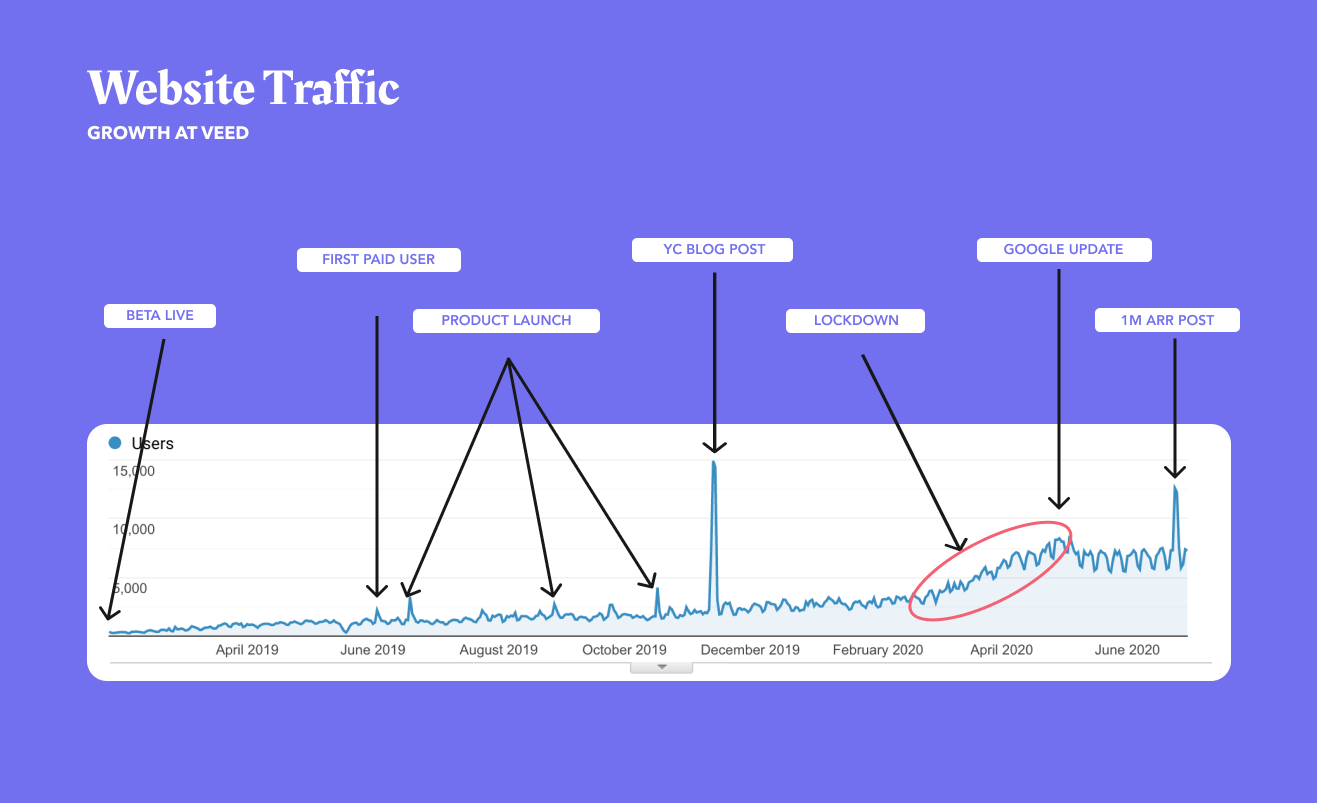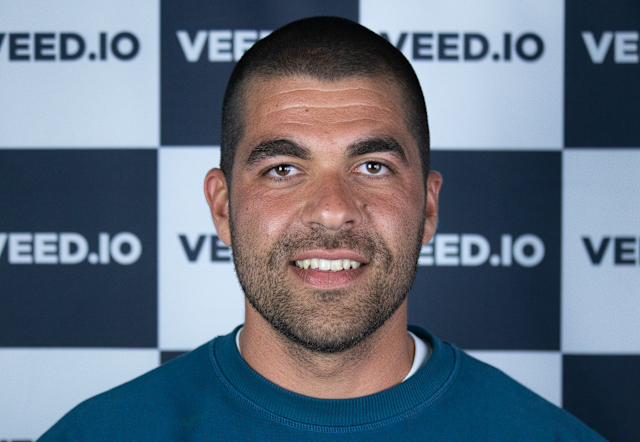Table of contents
In 2019, Sabba Keynejad was broke. Flat-out broke. He and his co-founder, Tim Mamedov had just been kicked out of their borrowed office space. The two developers they had somehow convinced to work for them quit on the same day.
Their video-editing startup VEED? It barely worked. They applied to Y Combinator as a last shot. Flew to California. Got grilled in Mountain View. Walked out thinking, “Maybe... just maybe...”
Then the email hit. The good old startup boot-to-the-face: “We’re not moving forward.”
Let’s be honest. This is where most founders tap out. When the dream’s dead and the bills are real. But Sabba’s not wired that way. Instead of wallowing, he did the one thing that separates those who make it from those who don’t.
He shipped a paywall.
Just a janky $5/month charge slapped on their sad MVP. He didn’t overthink it. Didn’t wait to polish the UI. He just thought, “Screw it. Let’s see who bites.”
Within 72 hours, 20 people paid.
That was it. That was the signal. Proof that someone, somewhere, would pay money for this half-broken video editor. That weekend changed everything.
Two years later? VEED had crossed $6M ARR, grown a team, and turned down investors who had ghosted them months earlier. As of 2025? VEED pulls in over $40M ARR, serves 10 million users a month (yep, 76% of the Fortune 500 use it), and runs with a lean team of 200.
How the hell did this happen? This is the story of how a dyslexic design grad from the middle of nowhere built one of the world’s fastest-growing video startups with zero funding and zero safety net.
And no, it wasn’t luck. It was an obsession.
Origins: Teenage Hustles and the Anti-Office Allergy
Sabba grew up far from the bright lights of Silicon Valley. A self-proclaimed “middle-of-nowhere” kid who found salvation in the internet, Photoshop, and weird business ideas. His first hustle? Importing red Solo cups, like the ones from American frat movies, and flipping them to party-starved UK teenagers.
He started with 400 leftover cups from his 16th birthday and ended up running an online shop selling crates. Didn’t know what dropshipping was; he was just doing it.
Later, he sold Breaking Bad Halloween costumes online, including fake blue meth (made from sugar). That week alone? £14K in sales. As a university student. Just because he noticed the internet was bored and had money to waste.
It wasn’t about getting rich. It was about creating something from nothing. Sabba was addicted to that feeling.
After art school, he tried the “real job” route. Design agencies, corporate offices, the whole charade. But something in him short-circuited. He couldn’t do 9 to 5. Couldn’t sit still. The “creative freedom” he craved was getting chewed up by approval chains and client edits.
So he quit. Without a backup plan.
Was it smart? No. Was it necessary? Absolutely.
He spent the next few years building side projects, taking contract gigs, and spiraling through random obsessions: VR, Arduino, music production, mobile games. None of it stuck. It was a creative explosion without a direction. And it was exhausting.
One train ride home in 2016, Sabba cracked open a notepad and wrote himself a question: “How can I combine creativity and entrepreneurship?”
It wasn’t some Oprah moment. It was desperation mixed with clarity. He needed to stop being “that guy with a hundred ideas” and start being the guy who saw one idea through.
Crashing, Burning, and Restarting
That “one idea” came when Sabba noticed something absurd: even he, someone relatively tech-savvy and creatively inclined, hated editing video. The tools were clunky, expensive, and way too powerful for most people’s needs.
He’d get asked to add subtitles or trim videos and think, Why is this so damn hard?
With Tim, whom he met at a global hackathon, Sabba built a simple tool in the browser. No app store, no downloads. You upload a video. Add text. Crop. Done.
They called it VEED.

Early traction? None. They spent months polishing features no one asked for. Hired two developers. Entered pitch competitions. Won them all. Got a free office. Felt like they were on the way up.
Then: crash.
Nobody wanted the product. The VCs who smiled at their pitch decks stopped returning emails. The office was yanked. The devs quit. They had nothing.
Actually, scratch that. They had less than nothing. They had debt, frayed friendships, and broken egos.
Tim got a contract job just to survive. Then started giving Sabba half his salary each month so he could keep building. That’s not co-founder chemistry. That’s war-buddy-level loyalty.
They had one final shot.
Build a new VEED MVP: super stripped-down, stupidly simple. Just trimming, cropping, subtitles. They slapped it on Product Hunt and spammed the internet.
People started using it. Slowly.
But still, no money.
Which brings us back to that now-legendary YC rejection. The rejection that didn’t end the journey, but started it.
The Weekend That Changed Everything
After YC said no, Sabba and Tim reread the feedback: “We don’t understand why you haven’t started charging yet.”
It hit like a baseball bat to the face. Of course. People only give you real feedback when there’s money on the table. Free users lie. Paying users scream the truth.
That weekend, they hacked Stripe. Five bucks a month.
Twenty people paid.
Was it glamorous? No. Was it polished? Not remotely. The app barely functioned. They even added fake buttons, non-working UI fluff, just to make it look like a product.
But it didn’t matter. The market whispered: We’ll pay you for this.
Sabba emailed YC: “Hey, we implemented your feedback. Want to reconsider?”
They didn’t. But that weekend made it irrelevant.
Now they had users. Revenue. Momentum.
Ramen profitability wasn’t far off.
They skipped investor meetings and focused on one thing: growth.
Not features. Not PR. Not awards. Just raw, relentless growth.
Content, Sweat, and a Spreadsheet of 500 Keywords
Sabba stopped writing code. He stopped designing. He stopped playing product founder.
Instead, he became a growth lunatic.
If there was one thing VEED would never have, it was money to burn on ads. So Sabba did what most funded founders are too proud to do: he got his hands dirty.
He answered 160 Quora questions, one by one. Wrote 30 blog posts, each focused on a hyper-specific user query: “How to trim Zoom recordings,” “How to add subtitles to TikTok videos,” “How to cut a video online for free.” He wasn’t guessing what people wanted. He was searching it, like a digital detective with a hangover.
He even filmed 30+ YouTube tutorials, each one painfully lo-fi, teaching people how to do stuff in VEED. No fancy intros. No brand agency polish. Just raw, useful content.
It worked. Not instantly, but slowly and surely. SEO kicked in. Traffic rose. Users converted. And those users? They didn’t need persuading. They were already looking for the solution. All VEED had to do was show up on Google before Adobe did.

That’s one of the greatest startup hacks no one wants to talk about: show up where the pain already exists. Don’t try to manufacture demand, surf it.
Meanwhile, competitors were burning venture cash on Facebook ads and influencers. VEED was earning every user the hard way.
And the ARR? It reflected that.
$1M. Then $2M.
By the time most startups are preparing for their first proper seed round, VEED was blowing past $3M ARR with a team of under ten.
When the Thing You’re Building Starts Building You
The weirdest part about sudden growth? You realize you're no longer building the product. The product starts building you.
Suddenly, there are Slack notifications at midnight from people you’ve never met in countries you’ve never visited. Suddenly, there are “customer success” teams and “brand kits” and “enterprise onboarding” docs.
Sabba, to his credit, never let it get to his head. He still remembered that time he couldn’t afford the train fare to his friend’s birthday party. He remembered the cardboard boxes in the flat. The landlord threatens. The sweet sting of startup poverty.
So even when revenue soared, he kept his priorities weirdly pure.
He didn’t build new features for the sake of it. He built them based on what people Googled. He didn’t chase the high-paying B2B whale. He focused on the prosumer market—YouTubers, freelancers, and startup marketers. People like him.
And it paid off.
By 2021, VEED crossed $6M ARR, still bootstrapped.
When VCs came knocking again (of course, they did), Sabba wasn’t desperate. He wasn’t chasing a cap table. He was chasing distribution.
Eventually, they raised $35 million from Sequoia, not to save the company, but to scale what was already working. The product wasn’t a pitch anymore. It was a cash machine.

2025: Ten Million Users and a Rocket Engine of Content
Fast-forward to today: 10 million people use VEED every month. That’s not a typo. Over 76% of the Fortune 500 have used it at some point. VEED is now an AI-powered, browser-native editing suite with text-to-video tools, avatars, subtitles, audio cleanup, and even branded team workspaces.
Oh, and it’s pulling in $40M ARR.
But Sabba still sounds like the same guy hacking together landing pages and spamming Product Hunt.
Because deep down, he is. He knows survivorship bias is real. That if a few early things had gone wrong, if Tim hadn’t split his salary, if the first 20 users hadn’t paid, they’d be just another startup carcass on the side of the internet highway.
He doesn’t pretend he had it all figured out. He still tells people, “I’m not even a good designer. I’m not a good developer either. I’m just relentless.”
That’s the point. He didn’t build VEED because he was a genius. He built it because he refused to stop.
And that’s the uncomfortable truth that makes founders squirm.
Most of us stop too soon. We stop when the office gets pulled. When the rejection email lands. When the devs quit. When Product Hunt doesn’t go viral. When the numbers don’t match the dream.
Sabba didn’t.
Obsession Beats Everything
At the heart of VEED’s rise isn’t a brilliant idea or flawless execution. It’s something simpler. Dirtier. More raw.
It’s an obsession.
Sabba became addicted to growth like a starving man is addicted to food. He had to figure out SEO. Had to learn how to make YouTube tutorials. Had to write landing pages even though he was dyslexic and hated writing. Had to post cringe on LinkedIn. Had to pick himself up, again and again and again, because there was no Plan B.
That’s what makes this story founder gold. Not the ARR. Not the user count. Not even the VC round.
It’s the reminder that building something real doesn’t start with money, or a perfect MVP, or Stanford buddies with pitch decks. It starts with something messier:
You. Bleeding into your work. Every single day.
Sabba bled. And VEED grew.
It’s not clean. It’s not cute. It’s not the kind of story you pitch on a podcast and leave everyone smiling.
But it’s the kind of story that gets you through your own brick walls.
So next time your product flops, your growth stalls, your co-founder bails, or some smug investor tells you to “come back when there’s traction,” think of Sabba.
Then shut the laptop. Go build something people are searching for. Charge five bucks. Talk to 20 users.
And don’t stop.

%20Logo.svg)




